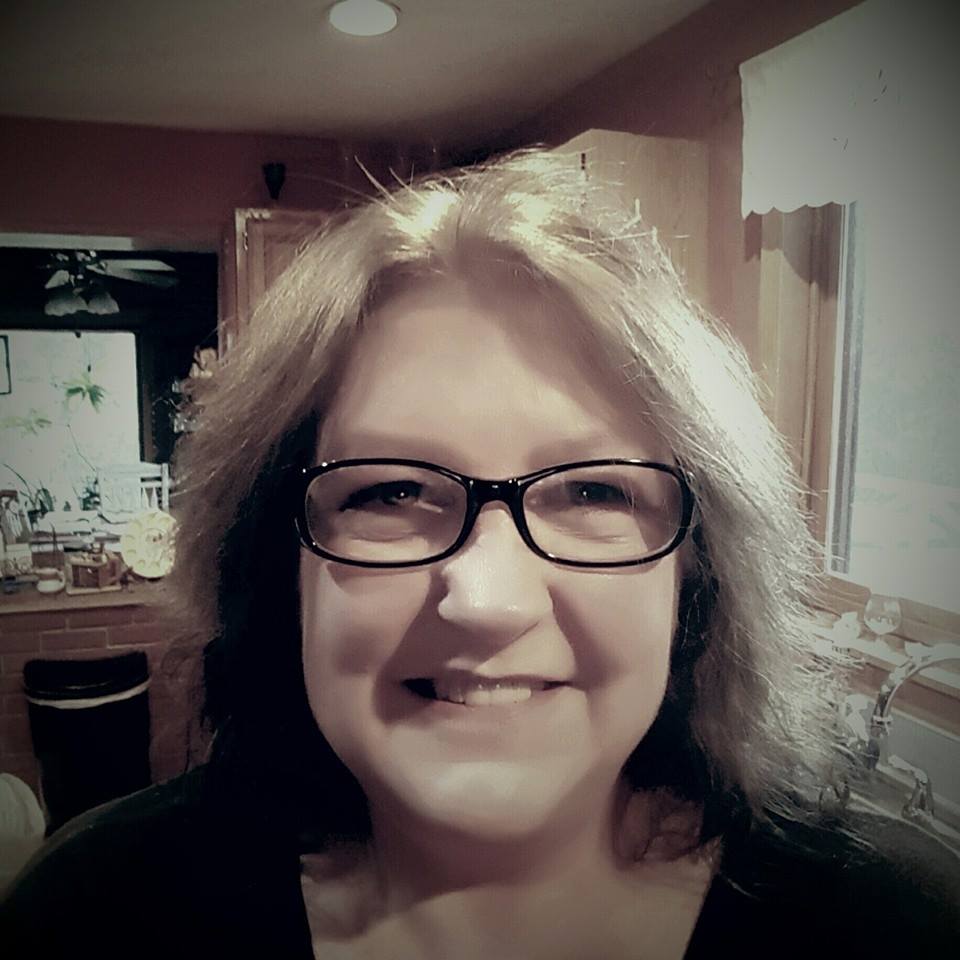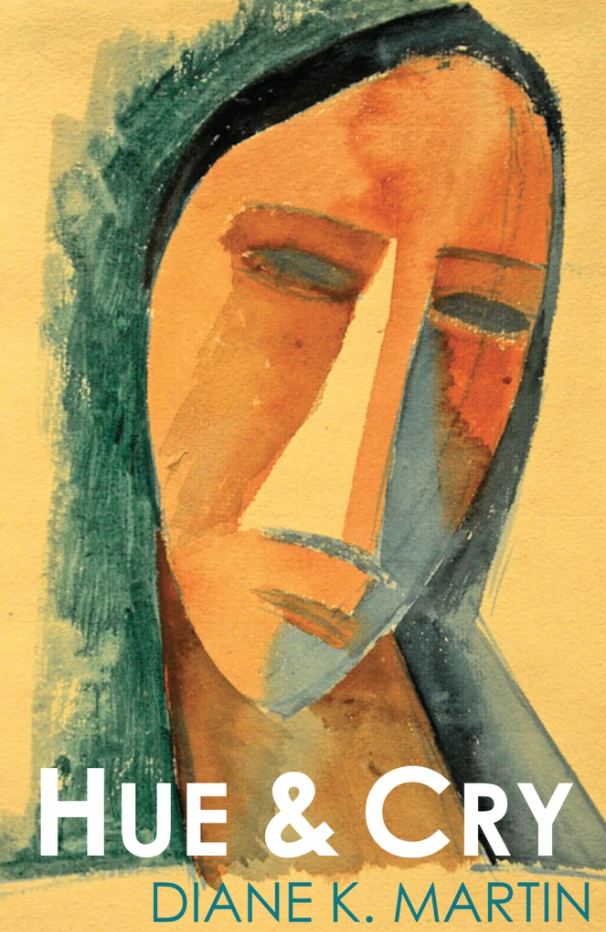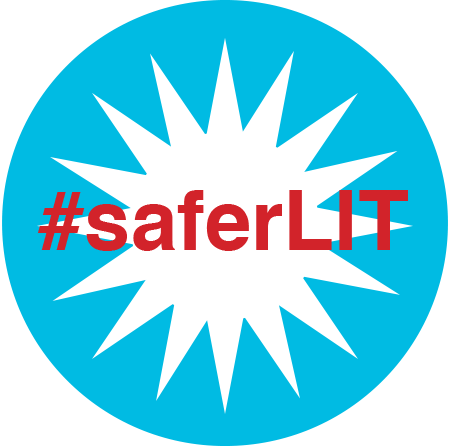ISSN: 1941-4137
POETRY THAT ENACTS THE ARTISTIC AND CREATIVE PURITY OF GLASS
POETRY THAT ENACTS THE ARTISTIC AND CREATIVE PURITY OF GLASS

Anne Graue is the author of Fig Tree in Winter (Dancing Girl Press, 2017). Her book Full and Plum-Colored Velvet is forthcoming in 2020 from Woodley Press. She has poetry in SWWIM, Mom Egg Review, Rivet Journal, The Westchester Review, Allegro Poetry Magazine, New Verse News, Into the Void, and in The Book of Donuts (Terrapin Books, 2017) and Coffee Poems (World Enough Writers, 2019). Her reviews appear in Glass: A Journal of Poetry, The Rupture, Whale Road Review, Green Mountains Review, Adroit, and The Rumpus.
July 15, 2020
Edited by Stephanie Kaylor
Edited by Stephanie Kaylor
Review of Hue & Cry by Diane K. Martin
 Hue & Cry
by Diane K. Martin
Madhat Press, 2020
Diane K. Martin’s collection Hue & Cry (Madhat Press, 2020) brings together poems of destruction and creation, warning and perception, persona and critique. It is not surprising, then, that many of the poems adopt the voices of the women in Pablo Picasso’s life who narrate scenes from the artist’s life at the time of their influence. When Picasso once said, “Every act of creation is first of all an act of destruction,” he was discussing his art and not the lives he may or may not have destroyed on his path to creation. Martin’s poems present readers with both in addition to themes that go beyond myth toward a metaphysical contemplation of life and art.
The women in Martin’s poems describe their time with Picasso and share feelings and details found/not found in paintings. In “Fernande Olivier: Femme dormant (meditation), 1904” the speaker tells us “I detest Sundays,” and that she stayed with Picasso for seven years, “as much a part of his studio / as the mattress propped on tins, the iron stove, / the yellow bowl.” She understands that she is a fixture, a possession, a muse for him. She narrates an existence in which “He forbade me model / or even shop or clean.” She credits herself with the onset of his rose period.
The poem that follows, “Gertrude Stein: Portrait de Gertrude Stein, 1906,” speaks as Stein who imparts, “My genius was seeing Picasso’s genius and writing it and making him what he was but what he was was painting.” In Stein-esque prose, Martin brings to light a relationship between the writer/benefactor and the artist that uncharacteristically places them both on the same level. The poems in Hue & Cry expose intimate relationships between Picasso and the women who were his muses; as a consequence, the poems show how the relationships affected so much of the art that changed the 20th Century.
Additional persona poems in the voices of Picasso’s women/muses/mistresses/wives are dispersed throughout the collection and further add dimensions to the myth of the analytical cubist. In “Genevieve Laporte: Le soleil ebloui, 1951,” Picasso tells Laporte that “the artist must take your world and shake it, rouse you from your waking sleep.” In 15 lines, a story is told of a man losing interest in the mother of his children and watching them leave the day before moving his mistress in. Alternatively, Jacqueline Roque’s voice in her poem “Femme nue au bonnet turc, 1955” speaks in reverent tones about living with Picasso, emphasizing her influence and comparing Picasso to God:
But every woman for twenty years was Jacqueline.
This face, this body — Nude in a Turkish Hat,
Woman in Algiers… He was the sun I faced all day,
at night, the moon. I watched him create; I never
turned away — paintings, etchings, sculptures in clay —
seven days a week. God Himself only worked six.
The persona poems are unique to each woman and her influence on the artist. Giving them a poetic voice elevates their status in history above even what he might have considered, and reinforces the poet Adrienne Rich’s idea of the male and female principles that work against one another and Susan Brownmiller’s extension of Rich’s metaphor to explain “masculinity as the right to physical rape, i.e., the right to the dominance and control of the female.” (Farwell 1977) The poems in Martin’s collection go far to illustrate the reality of the metaphor and even farther to express the destructive traits of the artist. In “Muse Rebellion,” the speaker is “sick of being slave / (White Goddess really!), commanded / to appear, breathe the right words in his ear / in the right order or resuscitate him / lip to lip until the susurrus evoked // the perfect-pitch vibrato of his heart.”
A number of art-infused poems make up the 89 pages of Hue & Cry, but there are also poems that address light and its metaphorical properties as well as the definitions of art and poetry. “Refract” asks the question, “If human life moves from matter to spirit, fact to story, / is it more than the breeze shot through aspens, / turning its gold medallions?” and goes on to note, “What a hurry we are in to lift off / into silkscreens of memory!” What are we if not light and images? Later, in ten lines, “Evening Light:” sets a scene with two people in which there is a he who “loves / the plush shadow, though the evening light / is clear and quenching, more liquid than at noon;” Loving dark and light for their different attributes. And in “What it Takes” the speaker offers a list of essentials for art (and presumably life), and includes the “light of early morning (hopeful) / or late afternoon (sentimental).” The needs of the artist are finite in this poem ending in “prayer spell curse chant benediction,” one after the other without punctuation, no pausing until the end.
The title of the collection and its poem signal danger and from the first poem, “In the Mouth of the Wolf” to the last one, “Shutting the Door,” with the allusion to the Tiger or the Prince story, there is a sense of desire for adventure juxtaposed with the fear of what may happen, the embedded question being should we keep ourselves safe or risk the unknown for something else, perhaps art? The speaker in the final poem knows that behind the door is either a prince or a tiger and admits, “We are meat / for both,” the imminent possible danger a reminder of the words of the speaker in the opening poem: “Yes, there are different kinds of dire.” The hues and cries of life are all around us: “Carmine / extracted from cochineal beetles now pinks up / strawberry yoghurt, but once it demonstrated // Spanish power and gave British soldiers their / red coats.” They continue to alert us to ask all important questions in different pigments and voices so that we continue to ask (perhaps to cry out) “Haven’t you ever wanted to walk on water?” The answer is, of course, yes, but at what cost?
Works Cited
Farwell, Marilyn R. “Adrienne Rich and an Organic Feminist Criticism.” College English, vol. 39, no. 2, 1977, pp. 191–203., www.jstor.org/stable/376500. Accessed 27 May 2020.
Visit Diane K. Martin's Website
Visit Madhat Press' Website
Hue & Cry
by Diane K. Martin
Madhat Press, 2020
Diane K. Martin’s collection Hue & Cry (Madhat Press, 2020) brings together poems of destruction and creation, warning and perception, persona and critique. It is not surprising, then, that many of the poems adopt the voices of the women in Pablo Picasso’s life who narrate scenes from the artist’s life at the time of their influence. When Picasso once said, “Every act of creation is first of all an act of destruction,” he was discussing his art and not the lives he may or may not have destroyed on his path to creation. Martin’s poems present readers with both in addition to themes that go beyond myth toward a metaphysical contemplation of life and art.
The women in Martin’s poems describe their time with Picasso and share feelings and details found/not found in paintings. In “Fernande Olivier: Femme dormant (meditation), 1904” the speaker tells us “I detest Sundays,” and that she stayed with Picasso for seven years, “as much a part of his studio / as the mattress propped on tins, the iron stove, / the yellow bowl.” She understands that she is a fixture, a possession, a muse for him. She narrates an existence in which “He forbade me model / or even shop or clean.” She credits herself with the onset of his rose period.
The poem that follows, “Gertrude Stein: Portrait de Gertrude Stein, 1906,” speaks as Stein who imparts, “My genius was seeing Picasso’s genius and writing it and making him what he was but what he was was painting.” In Stein-esque prose, Martin brings to light a relationship between the writer/benefactor and the artist that uncharacteristically places them both on the same level. The poems in Hue & Cry expose intimate relationships between Picasso and the women who were his muses; as a consequence, the poems show how the relationships affected so much of the art that changed the 20th Century.
Additional persona poems in the voices of Picasso’s women/muses/mistresses/wives are dispersed throughout the collection and further add dimensions to the myth of the analytical cubist. In “Genevieve Laporte: Le soleil ebloui, 1951,” Picasso tells Laporte that “the artist must take your world and shake it, rouse you from your waking sleep.” In 15 lines, a story is told of a man losing interest in the mother of his children and watching them leave the day before moving his mistress in. Alternatively, Jacqueline Roque’s voice in her poem “Femme nue au bonnet turc, 1955” speaks in reverent tones about living with Picasso, emphasizing her influence and comparing Picasso to God:
But every woman for twenty years was Jacqueline.
This face, this body — Nude in a Turkish Hat,
Woman in Algiers… He was the sun I faced all day,
at night, the moon. I watched him create; I never
turned away — paintings, etchings, sculptures in clay —
seven days a week. God Himself only worked six.
The persona poems are unique to each woman and her influence on the artist. Giving them a poetic voice elevates their status in history above even what he might have considered, and reinforces the poet Adrienne Rich’s idea of the male and female principles that work against one another and Susan Brownmiller’s extension of Rich’s metaphor to explain “masculinity as the right to physical rape, i.e., the right to the dominance and control of the female.” (Farwell 1977) The poems in Martin’s collection go far to illustrate the reality of the metaphor and even farther to express the destructive traits of the artist. In “Muse Rebellion,” the speaker is “sick of being slave / (White Goddess really!), commanded / to appear, breathe the right words in his ear / in the right order or resuscitate him / lip to lip until the susurrus evoked // the perfect-pitch vibrato of his heart.”
A number of art-infused poems make up the 89 pages of Hue & Cry, but there are also poems that address light and its metaphorical properties as well as the definitions of art and poetry. “Refract” asks the question, “If human life moves from matter to spirit, fact to story, / is it more than the breeze shot through aspens, / turning its gold medallions?” and goes on to note, “What a hurry we are in to lift off / into silkscreens of memory!” What are we if not light and images? Later, in ten lines, “Evening Light:” sets a scene with two people in which there is a he who “loves / the plush shadow, though the evening light / is clear and quenching, more liquid than at noon;” Loving dark and light for their different attributes. And in “What it Takes” the speaker offers a list of essentials for art (and presumably life), and includes the “light of early morning (hopeful) / or late afternoon (sentimental).” The needs of the artist are finite in this poem ending in “prayer spell curse chant benediction,” one after the other without punctuation, no pausing until the end.
The title of the collection and its poem signal danger and from the first poem, “In the Mouth of the Wolf” to the last one, “Shutting the Door,” with the allusion to the Tiger or the Prince story, there is a sense of desire for adventure juxtaposed with the fear of what may happen, the embedded question being should we keep ourselves safe or risk the unknown for something else, perhaps art? The speaker in the final poem knows that behind the door is either a prince or a tiger and admits, “We are meat / for both,” the imminent possible danger a reminder of the words of the speaker in the opening poem: “Yes, there are different kinds of dire.” The hues and cries of life are all around us: “Carmine / extracted from cochineal beetles now pinks up / strawberry yoghurt, but once it demonstrated // Spanish power and gave British soldiers their / red coats.” They continue to alert us to ask all important questions in different pigments and voices so that we continue to ask (perhaps to cry out) “Haven’t you ever wanted to walk on water?” The answer is, of course, yes, but at what cost?
Works Cited
Farwell, Marilyn R. “Adrienne Rich and an Organic Feminist Criticism.” College English, vol. 39, no. 2, 1977, pp. 191–203., www.jstor.org/stable/376500. Accessed 27 May 2020.
Visit Diane K. Martin's Website
Visit Madhat Press' Website
Glass: A Journal of Poetry is published monthly by Glass Poetry Press.
All contents © the author.
All contents © the author.





